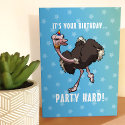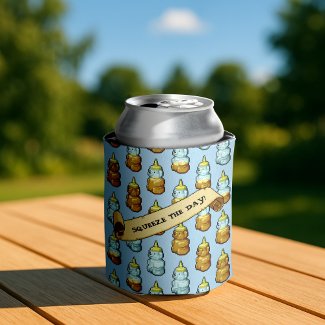The iconic bird on which my blog identity is based has twice been voted Britain's national bird. The robin (Erithacus rubecula) holds a special place in the heart of the people of the UK, and here are some possible reasons why.
In Britain, the Robin has a reputation as the gardener’s friend. It's a transactional relationship. You get some company while digging, and can fantasise about being a bird whisperer; they get any tasty insects that scatter in their direction. Even when out and about enjoying the British countryside, I've found that the small bird most likely to pause and check you out, will be a robin.
With their characteristic confidence, the robin might be in danger of over exposure when you add in their long standing association with Christmas. The postman delivering your Christmas cards in Victorian Britain would have worn a red jacket which earned them the "Robin" nickname. A second Christmas connection is the story that the robin was a dull brown bird until its breast was stained red by the blood of Christ, as it tried to protect him from a thorn in his crown. These connections make the robin a popular motif for the Christmas holidays.
On the distinctive colouring, the red breast is really more of an orange; but at the time that "robin redbreast" was coined, there was no word for 'orange' in English; the fruit was not known in the islands until the 1500s. The current taxonomical name, (with rubecula derived from the latin 'ruber' meaning 'red'), was settled upon in 1800.
Back when kidnapping, poisoning and murder were staples of childrens' stories, an old children’s nursery rhyme called Who killed Cock Robin? had it's first recorded writing in the 18th century. I misremembered this from childhood as a murder mystery, where various suspect birds give their alibis until we reach the sparrow and his bow and arrow. Revisiting it as an adult, the sparrow declares his heinous crime at the start (before spoiler alerts were a thing). A 15th century stained glass window in Buckland Rectory, Gloucestershire, is thought to depict this story, but the dodgy drawing has caused debate about the type of bird. Someone needs to get the ladders out and take a decent picture of the window.
Leaping forward to 1940 (like a time travelling superhero, see where I'm going with this), the robin got a dynamic pop culture makeover as Batman's sidekick, although his American creators will have been referencing the American robin. Interesting choice, I reckon an American robin could take a bat in one to one combat. The keenest robin experts will note from the website header that my robin's red breast doesn't extend around its face. In this respect it's like an American robin, a decision taken with artistic licence to show the eye better; but how else do the two types of robin compare, I hear no-one ask? Well here you go:
European vs American Robin: Head to Head
| Species | European Robin | American Robin |
| Size | 12.5 to 14cm, wingspan 20 to 22cm (flycatcher family) | 23 to 28cm, wingspan 31 to 40cm (thrush family) |
| Range | Western Europe to Western Siberia | North America |
| Plumage | Male & female look the same | Female has duller plumage |
| Diet | Mostly invertebrates | A 60/40 mix of berries and invertebrates |
| Behaviour | Highly aggressive to competitors | Assemble in large flocks at night, to roost |
| Fun Fact | Said to be bolder in the British Isles due to the protection conferred by the aforementioned Christian connection | Known to get drunk on fermented Firethorn berries |
Got any more exciting robin facts? Add them in the comments. Or just say 'hello' to fill me with joy knowing that another human has read this.










